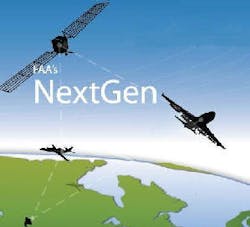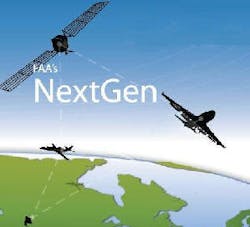NASA provides FAA with Precision Departure Release Capability NextGen software tool
WASHINGTON, 22 Aug. 2013. NASA officials have delivered to the Federal Aviation Administration (FAA) a new, NextGen software tool that will improve the flow of aircraft from runways to cruising altitudes.
The Precision Departure Release Capability (PDRC), developed by NASA engineers, was transferred to the FAA for further development and implementation.
PDRC was developed after an analysis of aircraft operations showed that uncertainty in precise departure times due to factors such as bad weather and heavy traffic may result in missed opportunities for those flights to efficiently merge into the flow of high-altitude traffic.
PDRC’s surface model component predicts departure times and departure runways. This information is automatically sent to en route centers, where PDRC’s en route model component provides ascent trajectories from takeoff to the merge point in the high-altitude traffic stream.
PDRC tests demonstrate that the tool helps to fill slots in the high-altitude flow that would otherwise go empty due to timing issues. PDRC would complement the technologies and procedures already being used by the FAA to manage traffic flow and ease delays through each phase of flight.
This event marks the third time in the past two years the two agencies have collaborated on the development of new technologies to enable aircraft to fly more safely and efficiently, ease congestion in the nation’s skies, and reduce aviation’s impact on the environment.
In earlier technology transfers, the FAA accepted a technology in February 2012 that also improves the management of air traffic in congested skies. This technology, called Three-Dimensional Path Arrival Management (3D PAM), helps air traffic controllers deliver aircraft from cruising altitude to the runway more efficiently, reducing noise and fuel burn.
In July 2011, NASA transferred to the FAA significant work on flow-based trajectory management, which helps air traffic controllers coordinate the flight paths of aircraft ascending through congested airspace in order to improve traffic flow and increase capacity.

